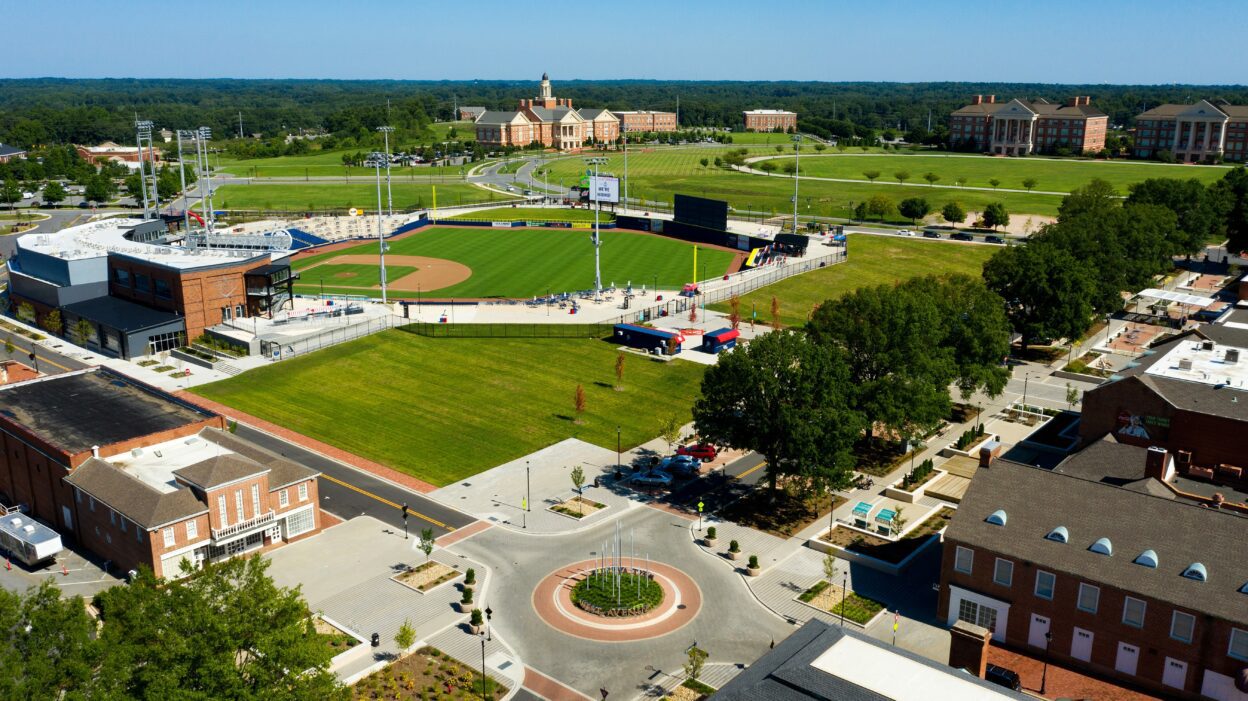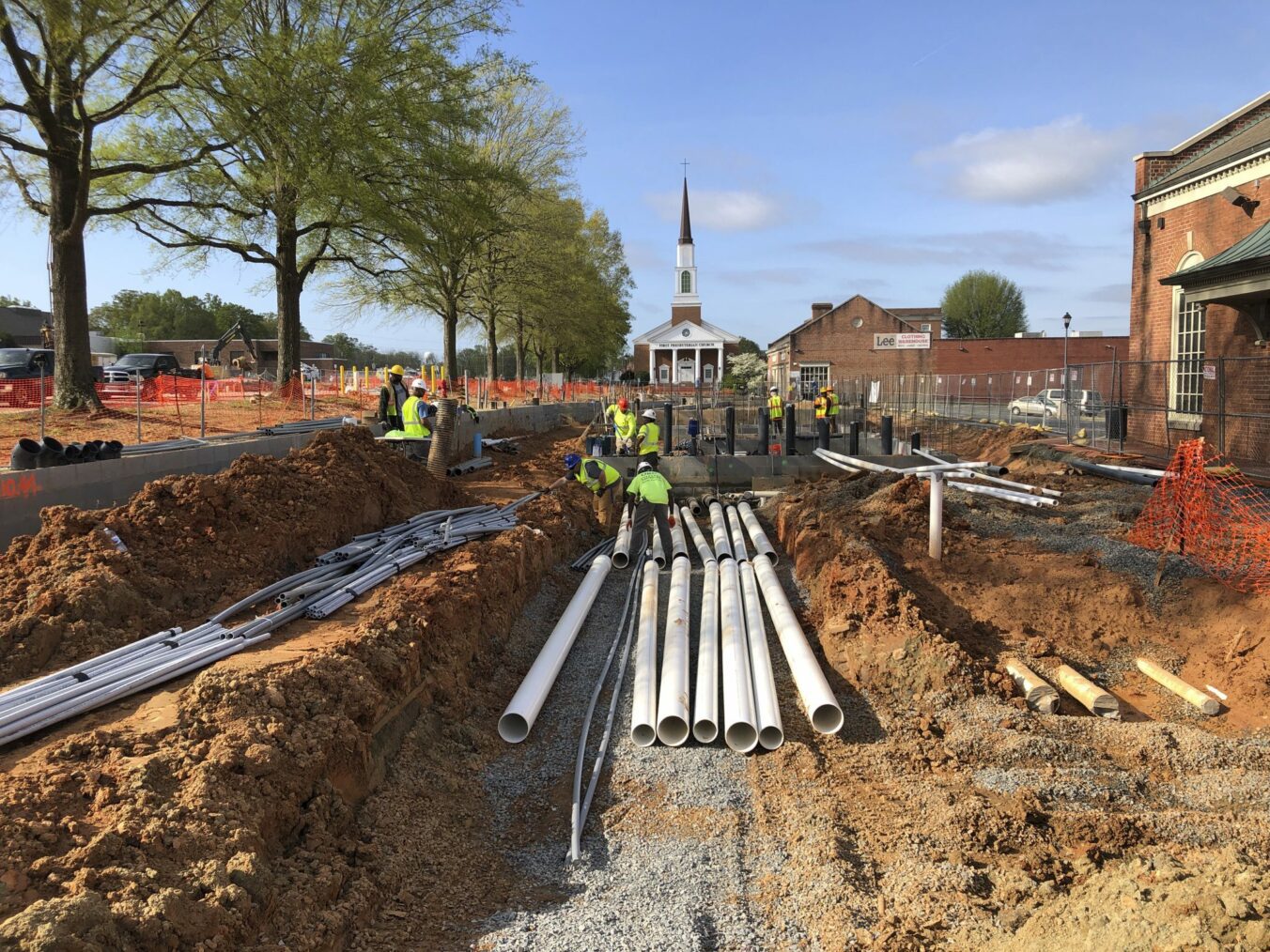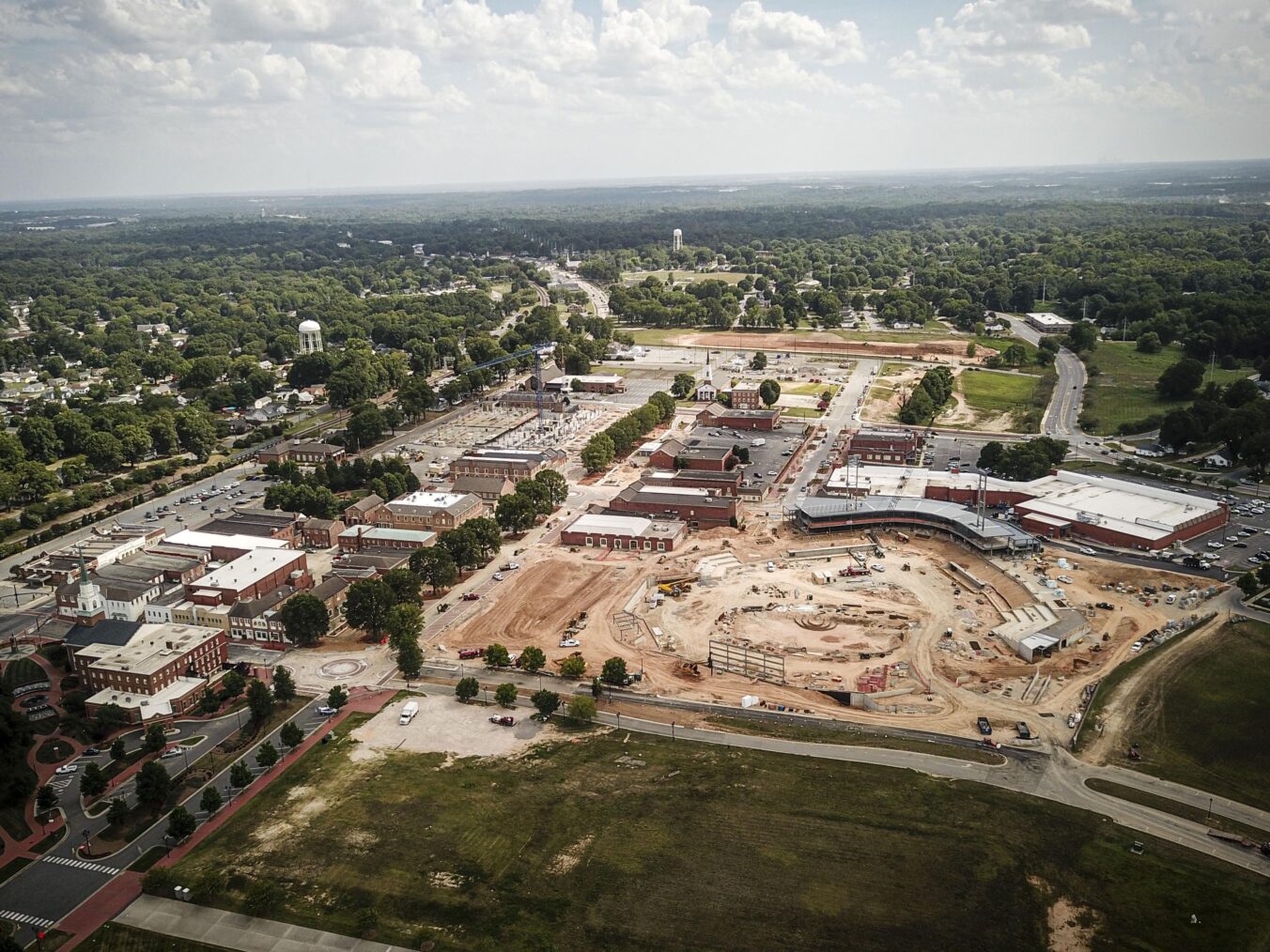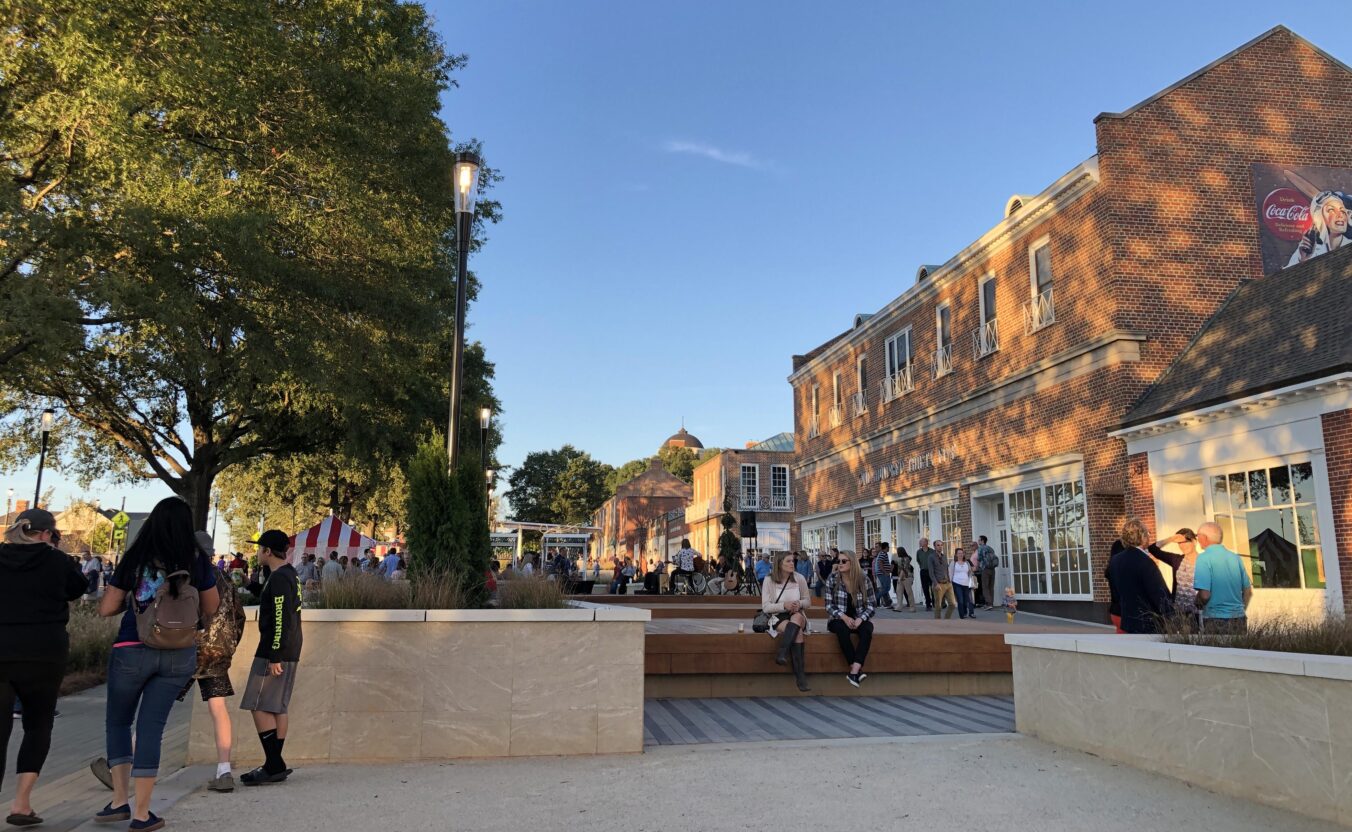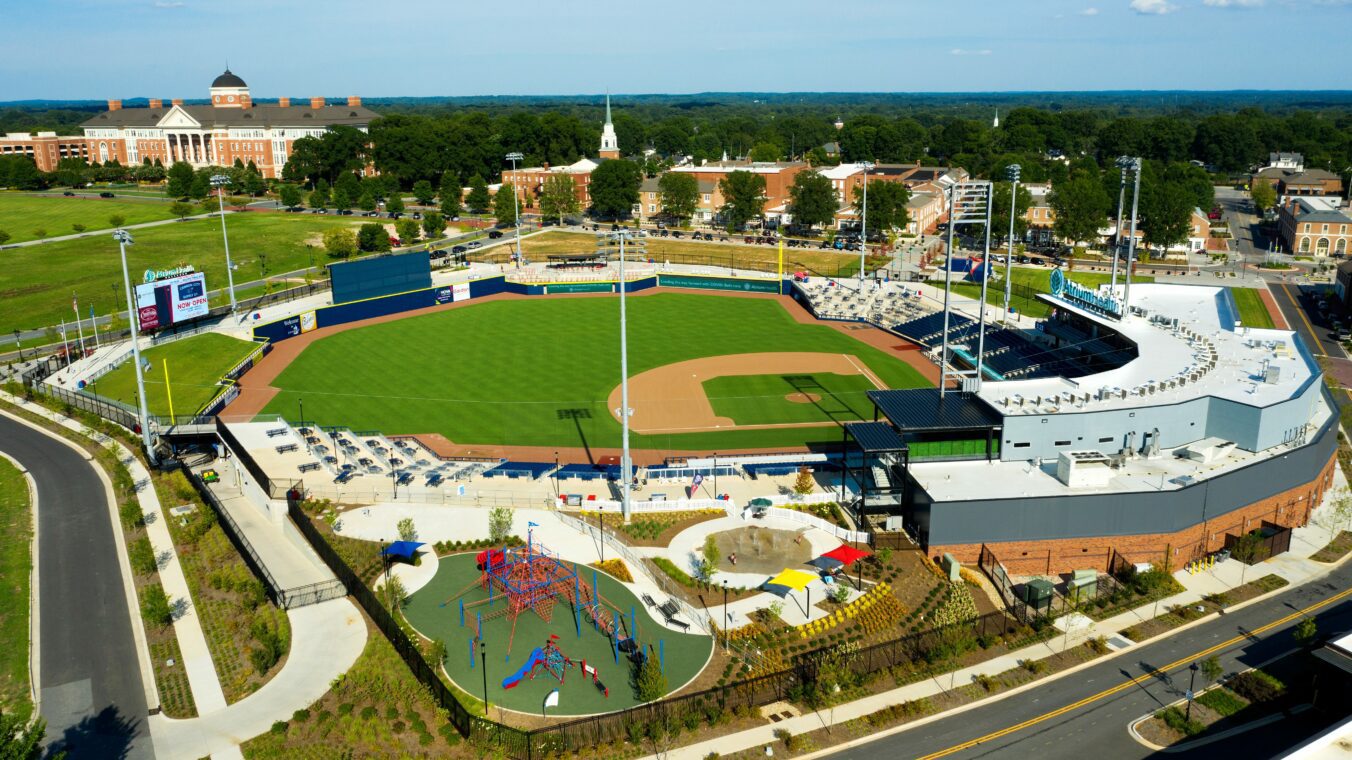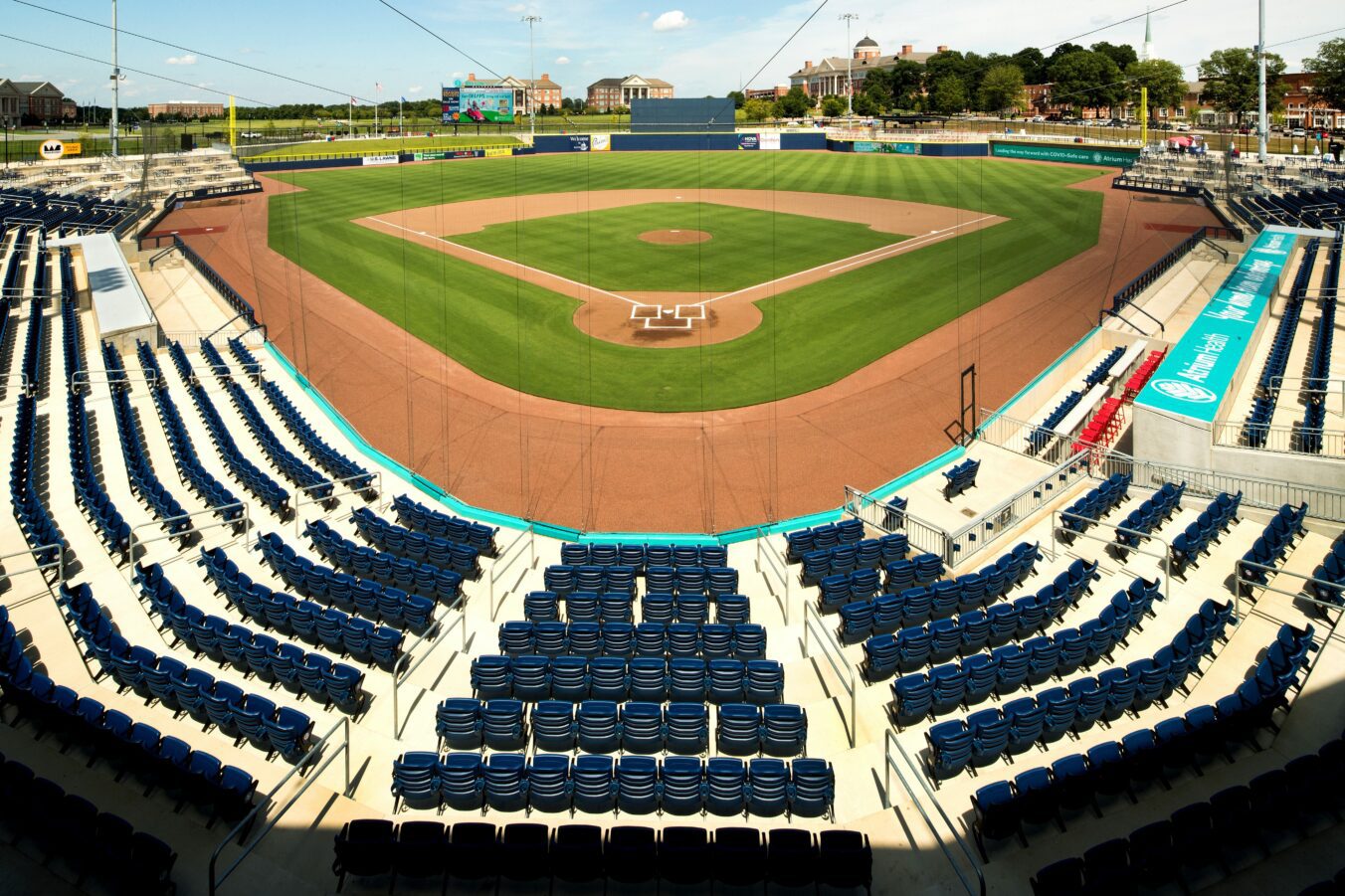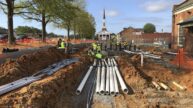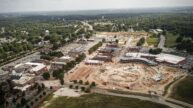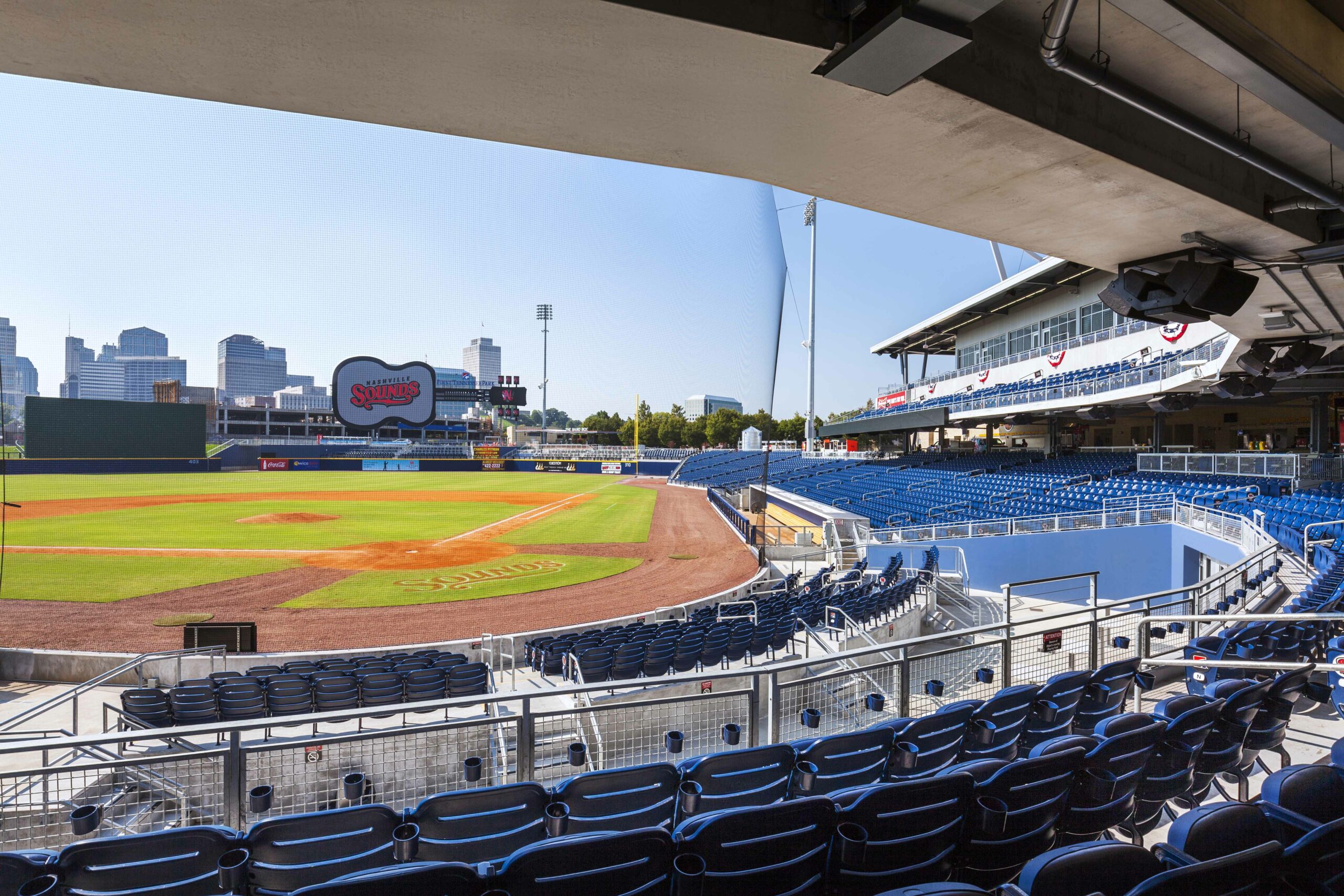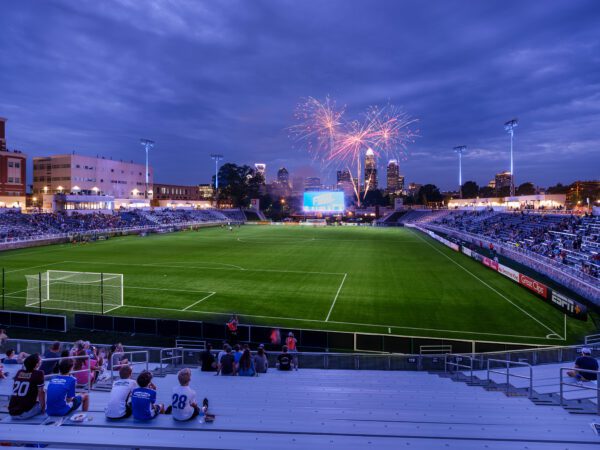Following a period of devastating economic conditions due to the closure of the city’s dominant employer, Kannapolis set out to invest in the health of its economy with the Kannapolis Downtown Revitalization Plan. City Council took the initiative to purchase the entire downtown – approximately 50 acres and eight blocks of buildings through private and public partnerships. Understanding that a prosperous and vibrant downtown depended on investment in an anchor project, the City chose a sports and entertainment venue as the centerpiece to stimulate the most spinoff growth in the restaurant, retail, and residential sectors. Barton Malow was hired as the construction manager for the first two phases of this Kannapolis redevelopment.
The City also understood the need to reimagine the remainder of the downtown area with infrastructure and streetscape improvements (Phase I). This included the replacement of aging and undersized utilities such as water, sewer/stormwater, and electricity to prepare for the surrounding development. The new unique streetscape serves as an urban park, with green spaces for activities such as concerts, arts, recreation, classes, and outdoor dining. There are also relaxation areas and interactive water features.
Atrium Health Ballpark (Phase II) is the new home of the Kannapolis Cannon Ballers, the White Sox affiliated Minor League team. The sports and entertainment venue serves as the primary catalyst to draw people downtown. The 4,930-seat venue hosts concerts, festivals, conferences, and serves as a continuation of the new urban park streetscape, open every day to citizens of Kannapolis. It was named the 2022 Ballpark of the Year by Ballpark Digest.
A True Team Effort
The client sought out partners who shared in the city’s entrepreneurial, innovative spirit. To bring the city back to life, the entire team took a transparent, hands-on approach and focused on the community’s needs first. This resulted in a high level of trust between the many stakeholders and the project team. Each team member was empowered to take ownership of their roles, which erased the often-adversarial nature of the design and construction industry. With inherent trust and collaboration, the project execution was better identified as Integrated Project Delivery and described as one of the most successful projects of the team members’ careers.
